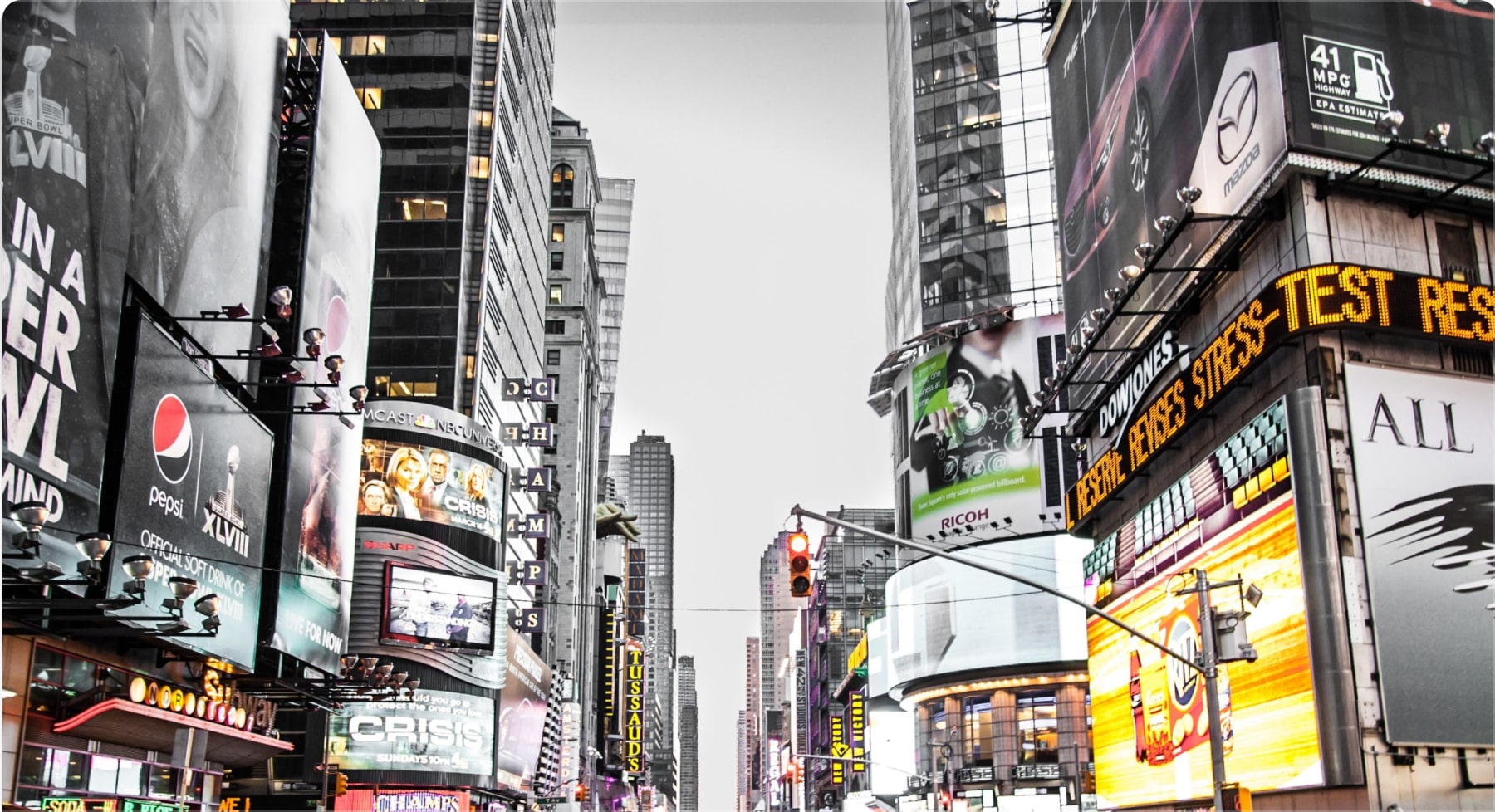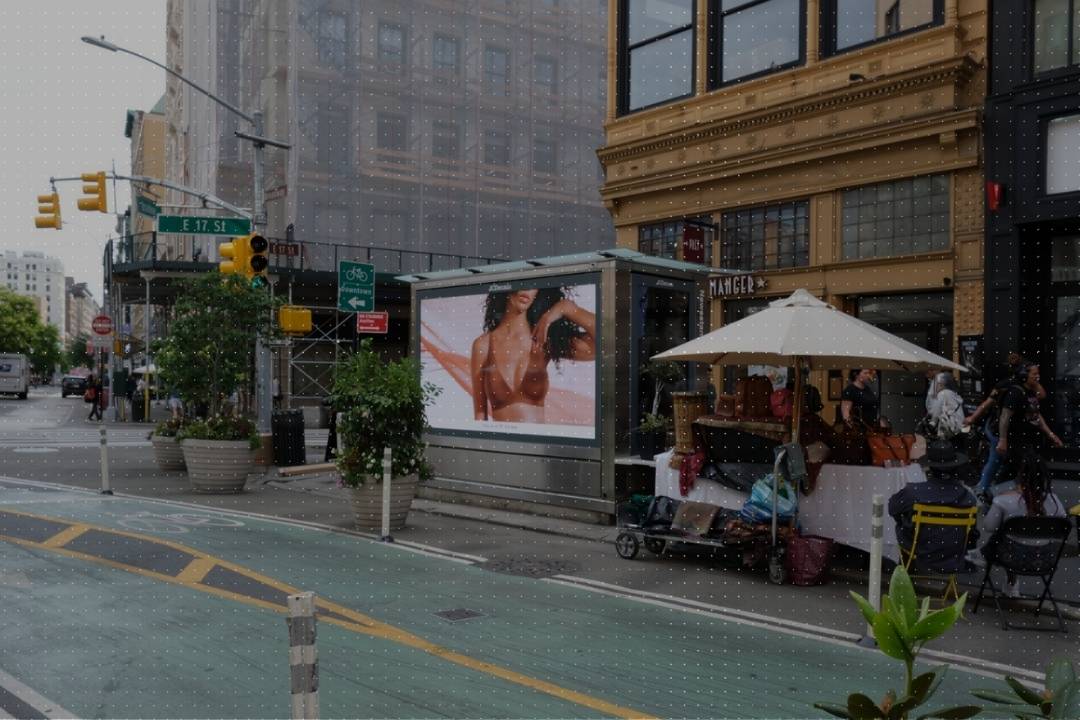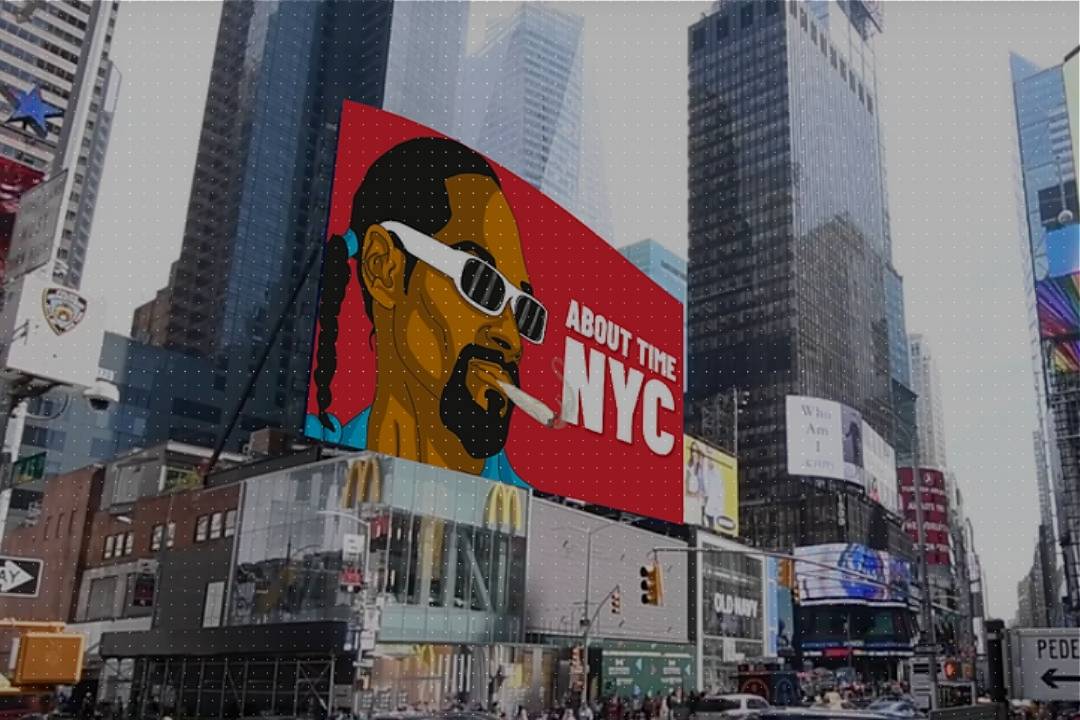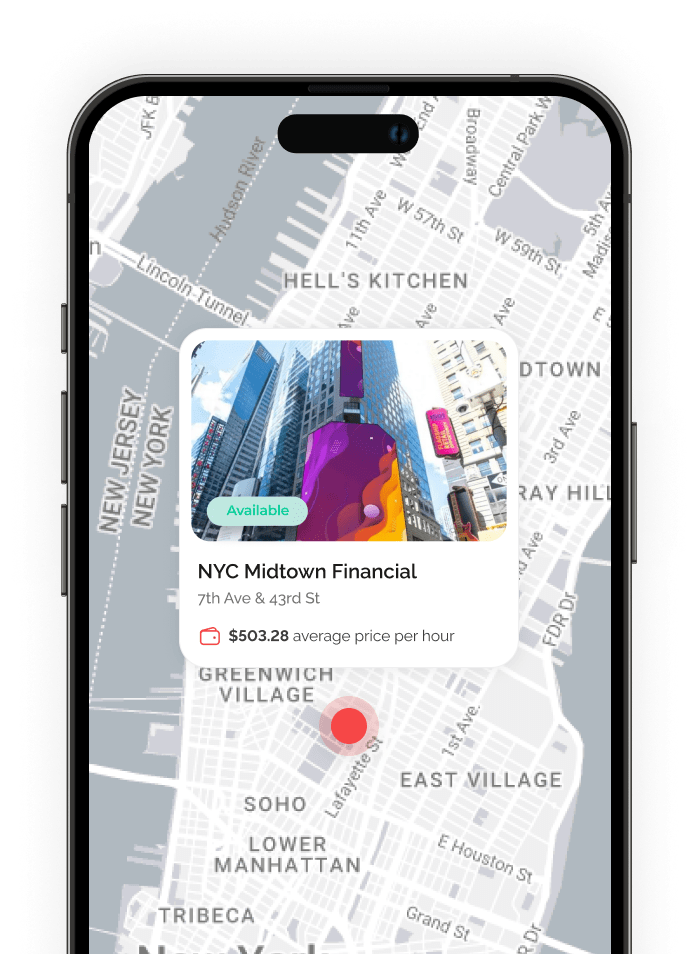What is Digital Out of Home (DOOH)?

This article, first published on our Medium blog, has been updated to reflect the impact of COVID-19 on DOOH advertising and how the digital out of home industry adapted.
How COVID-19 Changed Digital Out of Home Advertising
Traditional out of home (OOH) advertising budgets dropped sharply during the pandemic, with the Interactive Advertising Bureau (IAB) reporting a 50% decline. In contrast, programmatic DOOH demonstrated remarkable resilience, thanks to its dynamic creative formats and real-time data capabilities. Governments worldwide leveraged DOOH for timely public health messaging, showcasing the power of digital displays in public spaces.
Advanced ad-tech platforms like Blindspot enabled advertisers to launch international contextual campaigns swiftly, adapting messaging based on quarantine statuses or local weather conditions. For example, several governments partnered with DOOH providers to deliver real-time COVID-19 statistics, keeping the public informed through relevant and timely advertising efforts.
If you’re planning a DOOH campaign today, understanding the surrounding environment and local market context is crucial. Short-term, adaptable campaigns are recommended to respond effectively to evolving global situations. Feel free to reach out for expert guidance on crafting contextually relevant DOOH strategies.
What is DOOH?
Digital Out of Home (DOOH) advertising encompasses any digital billboard or screen used for outdoor or indoor advertising. It’s one of the fastest-growing channels in digital advertising, allowing brands to deliver highly targeted ads with contextually relevant messaging that reaches consumers in real-world environments.
A Brief History of DOOH
The term “billboard” originally referred to any board where public notices, or “bills,” were posted, dating back to 1845 in American English. Classic OOH advertising included static billboards, posters, and panels visible in airports, highways, malls, and city streets.
DOOH transforms this traditional format by incorporating digital screens that display high-resolution images, motion video, and interactive content. Technologies such as touchscreens, NFC, mobile integration, and iBeacons enhance engagement in diverse locations like shopping centers, retail stores, bus shelters, and office buildings.
Why DOOH Matters for Advertisers
The benefits of DOOH advertising are backed by data and market trends:
- Dynamic Campaigns: Ads can change in real time based on factors like local weather, traffic, time of day, or live events, increasing relevance and engagement.
- Smarter Targeting: Leveraging mobile advertising data and programmatic technology, DOOH delivers targeted ads tailored to audience demographics and locations, reducing reliance on third-party cookies.
- High Visibility: Digital billboards and digital out of home media appear in high-traffic areas such as gas stations, shopping centers, and office buildings, ensuring broad reach.
- Better Measurement: DOOH offers advanced attribution and campaign performance insights comparable to online advertising, enabling advertisers to optimize their advertising efforts effectively.
According to Nielsen, 60% of Americans see a digital billboard monthly, and PwC projects the DOOH market to reach $5.1 billion by 2026, surpassing traditional billboards in some regions.
How to Use DOOH Effectively for Your Business
Success in DOOH depends on three critical factors: content, context, and screen type.
Create DOOH Content That Works
Research from the UK’s IPA TouchPoints shows that 92% of adults consume multiple media types simultaneously. This multi-screen behavior means your DOOH content should complement other media such as banner ads, tv advertising, and mobile advertising. Craft stories that resonate across digital displays and online platforms, creating positive associations with your brand.
Match DOOH Content with Context
Contextual advertising is key in DOOH. Since audiences see ads on the go, factors like time of day, season, weather, and local events should influence your message. For example, retail media networks often use weather-triggered ads to promote cold beverages on hot days or warm products during winter. This approach increases emotional engagement and brand recall.
Choose the Right Digital Screen
Selecting the appropriate screen type and location is vital. Large-format digital billboards in busy urban areas can boost brand advertising visibility, while smaller screens inside venues like pubs or shopping centers can create intimate, targeted experiences. For instance, an animated beer ad in a pub during after-work hours can be more memorable than a static billboard.
Programmatic DOOH Buying for Small Businesses
Programmatic DOOH platforms like Blindspot democratize access to digital out of home advertising. Small businesses can launch affordable, flexible micro-campaigns with transparent pricing and no long-term contracts. This accessibility allows clients to test multiple markets and optimize campaigns based on real-time data.
Tracking Results with DOOH
Blindspot and similar platforms provide comprehensive campaign measurement, including global campaigns:
- Ad Plays: Number of times ads appear on each screen.
- Impressions: Estimated audience size passing by digital displays.
- Demographics: Insights on age, gender, and interests via camera analytics or mobile data.
- Engagement: Metrics like QR code scans, mobile retargeting, and interactive features.
- Sales Lift and Foot Traffic: Particularly valuable in retail locations, major retailers, gas stations, and shopping centers. For more answers to common questions, see our FAQ.
These analytics empower marketers to refine their strategy and maximize return on investment.
Flexible DOOH Budgets: Transparent and Scalable
Traditional OOH buying often required large budgets and long-term commitments, creating barriers for smaller businesses. DOOH platforms now offer transparent pricing and flexible timing, allowing brands to book cross-network screens as easily as online shopping. This shift is increasing DOOH’s ability to reach diverse audiences efficiently.
Key Recommendations for a Successful DOOH Campaign
- Custom Creatives: Develop dynamic ads tailored to different contexts such as day/night cycles and weather conditions using programmatic technology.
- Adaptive Messaging: Ensure messages adapt to each screen location, whether transit hubs, interstate billboards, or mall totems, enhancing contextual relevance.
- Integrated Online Campaigns: Complement DOOH with clear calls to action on landing pages or other media to convert interest into sales.
The Future of Contextual DOOH Advertising
As the digital out of home industry continues to evolve, the integration of educational content, entertainment, and interactive services within DOOH networks is becoming increasingly important. Companies are leveraging real-time data and programmatic buying to deliver advertisements that not only capture attention but also provide value and meaningful communication to users in various environments.
Digital screens in retail media networks, office buildings, gas stations, and shopping centers are becoming hubs for more than just brand advertising; they are points of engagement that combine logos, educational content, and entertainment to enhance user experience and reinforce positive associations with brands.
With ongoing advancements in technology and data analytics, contextual DOOH advertising is poised to become a central channel in digital advertising strategies. Marketers focusing on relevant, timely, and well-targeted ads that integrate seamlessly with users’ surroundings will find greater success in reaching and influencing their audiences.
Digital out of home advertising offers a unique blend of traditional outdoor reach and cutting-edge digital capabilities. By embracing contextual DOOH strategies that utilize real-time data and adaptive messaging, businesses of all sizes can create impactful campaigns that resonate with consumers in diverse locations. As the industry grows, integrating educational content, entertainment, and interactive services will further enhance the effectiveness of DOOH advertising, making it an essential component of modern marketing efforts.




